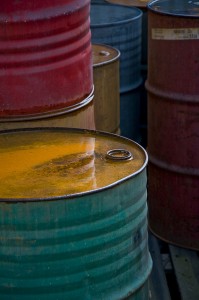
Many are worried that the recent boom in US oil production could be seeing some slowdown in the next year. OPEC has slashed oil prices by nearly 30 percent, and prices keep falling. These price cuts could potentially reduce the cost feasibility of US oil production. Despite these concerns, analyst firms like Citibank still remain optimistic.
Why Has OPEC Cut the Price of Oil?
As of June, OPEC announced that they would be slowly cutting oil prices. The explanations as to why this would occur have been mixed. A video on a related BBC story cites slowing growth in China coupled with a slumping Eurozone economy, both of which will reduce worldwide oil demand. Iraq’s oil minister Adel Abdul Mahdi blames an internal “price war” being waged within OPEC itself, resulting in a “race to the bottom” to see who can offer the most competitive prices.
Others suspect that OPEC has darker intentions, punishing Putin for his disruptive activity in the Ukraine while duplicitously trying to topple the US’s surging shale oil production. This latter theory has gained particular traction with pundits and analysts alike. Contributors like Forbes’ Chip Register go as far as to say that, “the Saudis have put a bull’s-eye on the U.S. shale industry.”
By cutting the price down to below $80/barrel, many Middle Eastern oil producers are no doubt hoping that the low price will make further production uneconomical. The OPEC secretary general stated last week, “with oil at around $80 a barrel, half of all U.S. shale projects would become uneconomic.”
US Indicates Resilience
Despite these machinations, US production is slated to remain healthy in 2015. Companies that supply the necessary sand and guar gum for fracking wells still post strong demand for their products up through the next year. Robert Rasmus, who is is one of the CEOs for the Hi-Crush mineral sand company, claims “90 percent of the company’s sand output was sold for 2015.”
This optimism seems to be the prevailing attitude with US shale oil producers. Many company owners and workers are stating that prices would have to fall well below $60 or even $50/barrel before production begins to start breaking even.
On top of this resilience, most wells are already slated for production through next year. The only slowdown some producers may experience is in beginning projects that will initiate new wells. Fadel Gheit, a senior analyst for Oppenheimer and Company claims that prices will have to climb much lower for production to legitimately slow. Until then, the only result will be that, “new projects will be deferred because companies will be hoping that a new technology will reduce the cost.”
Other analysts, such as director of the Center on Global Energy Policy at Columbia University Jason Bordoff, assert that prices would have to fall even further and, “stay there for 6 months or more, to have a significant effect on U.S. production.”
A Bright Future
According to experts like Canadian Bank RBC Capital Market’s Helima Croft, the Saudis cannot afford to maintain their bluff on oil prices for much longer. OPEC countries are busy contending with social programs to keep unemployed youth socially engaged and deterred away from extremist groups.
In the meantime, a landslide victory for Republicans in the midterms increases the likelihood of crucial programs that will help reduce oil production costs dramatically. Speaker of the House John Boehner claimed that with a strong congressional Republican majority, his first priority is building the Keystone pipeline — not to mention to finally repeal Obamacare.
With this ambitious atmosphere, shale production is determined to not falter in the face of Saudi Arabia’s head games. Fracking technology continues to advance by the month, with key factors slated on the congressional agenda to make production and transport even easier.
Your company can take advantage of this climate; purchase equipment for drilling and excavation needs today.